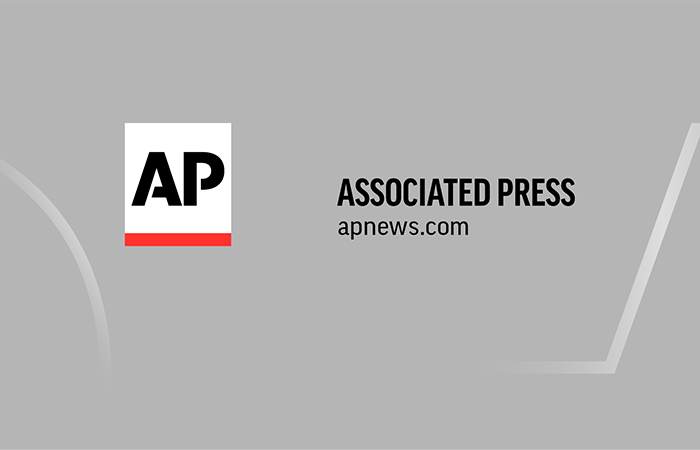Inflation's Relentless Grip: A Deep Dive into Rising Prices and Economic Uncertainty
February 13, 2025, 5:05 am

Location: United States, Texas, Austin
Employees: 10001+
Founded date: 2003
Total raised: $3.86B

Location: United States, California, Cupertino
Employees: 10001+
Founded date: 1976
Total raised: $100M

Location: United States, Ohio, Hudson
Employees: 10001+
Founded date: 1943
Inflation is a beast that refuses to be tamed. It lurks in grocery aisles and gas stations, gnawing at consumers' wallets. January 2025 saw a fresh surge in prices, raising alarms across the nation. The latest data reveals that inflation is not just a fleeting shadow; it’s a persistent reality.
The Consumer Price Index (CPI) rose by 0.5% in January compared to December. This spike marks the largest monthly increase since August 2023. Core consumer prices, which exclude the volatile food and energy sectors, climbed 3.3% year-over-year. This is a slight uptick from December's 3.2%. Economists watch these core prices closely, as they offer a clearer view of inflation's trajectory.
Food prices are a significant contributor to this inflationary pressure. Grocery costs jumped 0.5% in January alone. Eggs, a staple in many households, saw a staggering 15.2% increase in price. This surge is largely due to an avian flu outbreak that has decimated flocks, forcing producers to cull millions of birds. The price of eggs has skyrocketed by 53% compared to the previous year. Consumers are feeling the pinch, with many stores imposing purchase limits and restaurants adding surcharges for egg dishes.
Gasoline prices are also on the rise, climbing 1.8% in January. This increase compounds the financial strain on families already grappling with higher costs for essentials. Car insurance rates are not immune either, rising 2% in the same month. The cumulative effect of these price hikes creates a perfect storm for consumers, who are left scrambling to make ends meet.
Businesses are feeling the heat as well. Phil Hannon, vice president of operations at Abt, a consumer electronics store, anticipates raising prices between 3% and 15% in March. This increase is a direct response to tariffs imposed on steel and aluminum. Hannon is already seeing a surge in customers eager to purchase appliances before prices go up. The looming tariffs have created a sense of urgency, pushing consumers to act quickly.
The Federal Reserve is in a tight spot. Fed Chair Jerome Powell recently testified that while progress has been made in combating inflation, the battle is far from over. The Fed's key interest rate currently sits at 5.3%, a two-decade high. This rate is designed to restrict borrowing and spending, but the recent uptick in consumer prices complicates the Fed's plans. Powell has indicated that the central bank will maintain a restrictive stance for the time being.
The economic landscape is fraught with uncertainty. Trump's tariffs on steel and aluminum could further exacerbate inflation. Goods prices, excluding food and energy, rose 0.3% in January. This increase comes despite previous stability in prices for cars, furniture, and appliances. The specter of tariffs looms large, threatening to push costs even higher.
The situation is precarious. Economists warn that prolonged uncertainty could dampen business confidence. If companies hesitate to invest or hire, the ripple effects could be significant. A slowdown in hiring could lead to a stagnation in economic growth, creating a vicious cycle of reduced spending and increased prices.
The name change of the Gulf of Mexico to the Gulf of America, ordered by Trump, adds another layer of complexity to the current economic climate. While this may seem trivial in the grand scheme of inflation, it reflects a broader trend of political influence on economic decisions. Companies like Apple and Google have complied with the order, but the implications of such changes extend beyond mere semantics.
As inflation continues to rise, consumers are left grappling with the reality of their financial situations. The rising cost of living is a daily reminder of the economic challenges ahead. Households are forced to make tough choices, prioritizing essentials while cutting back on discretionary spending.
The future remains uncertain. The Fed's ability to navigate this inflationary landscape will be crucial. If inflation persists, the central bank may have to consider more aggressive measures. However, the balance between curbing inflation and fostering economic growth is delicate. A misstep could lead to a recession, further complicating the lives of everyday Americans.
In conclusion, inflation is a relentless force that shapes the economic landscape. As prices rise, consumers and businesses alike must adapt to a new reality. The path forward is fraught with challenges, but understanding the dynamics of inflation is essential for navigating this turbulent terrain. The stakes are high, and the impact of these economic shifts will be felt for years to come.
The Consumer Price Index (CPI) rose by 0.5% in January compared to December. This spike marks the largest monthly increase since August 2023. Core consumer prices, which exclude the volatile food and energy sectors, climbed 3.3% year-over-year. This is a slight uptick from December's 3.2%. Economists watch these core prices closely, as they offer a clearer view of inflation's trajectory.
Food prices are a significant contributor to this inflationary pressure. Grocery costs jumped 0.5% in January alone. Eggs, a staple in many households, saw a staggering 15.2% increase in price. This surge is largely due to an avian flu outbreak that has decimated flocks, forcing producers to cull millions of birds. The price of eggs has skyrocketed by 53% compared to the previous year. Consumers are feeling the pinch, with many stores imposing purchase limits and restaurants adding surcharges for egg dishes.
Gasoline prices are also on the rise, climbing 1.8% in January. This increase compounds the financial strain on families already grappling with higher costs for essentials. Car insurance rates are not immune either, rising 2% in the same month. The cumulative effect of these price hikes creates a perfect storm for consumers, who are left scrambling to make ends meet.
Businesses are feeling the heat as well. Phil Hannon, vice president of operations at Abt, a consumer electronics store, anticipates raising prices between 3% and 15% in March. This increase is a direct response to tariffs imposed on steel and aluminum. Hannon is already seeing a surge in customers eager to purchase appliances before prices go up. The looming tariffs have created a sense of urgency, pushing consumers to act quickly.
The Federal Reserve is in a tight spot. Fed Chair Jerome Powell recently testified that while progress has been made in combating inflation, the battle is far from over. The Fed's key interest rate currently sits at 5.3%, a two-decade high. This rate is designed to restrict borrowing and spending, but the recent uptick in consumer prices complicates the Fed's plans. Powell has indicated that the central bank will maintain a restrictive stance for the time being.
The economic landscape is fraught with uncertainty. Trump's tariffs on steel and aluminum could further exacerbate inflation. Goods prices, excluding food and energy, rose 0.3% in January. This increase comes despite previous stability in prices for cars, furniture, and appliances. The specter of tariffs looms large, threatening to push costs even higher.
The situation is precarious. Economists warn that prolonged uncertainty could dampen business confidence. If companies hesitate to invest or hire, the ripple effects could be significant. A slowdown in hiring could lead to a stagnation in economic growth, creating a vicious cycle of reduced spending and increased prices.
The name change of the Gulf of Mexico to the Gulf of America, ordered by Trump, adds another layer of complexity to the current economic climate. While this may seem trivial in the grand scheme of inflation, it reflects a broader trend of political influence on economic decisions. Companies like Apple and Google have complied with the order, but the implications of such changes extend beyond mere semantics.
As inflation continues to rise, consumers are left grappling with the reality of their financial situations. The rising cost of living is a daily reminder of the economic challenges ahead. Households are forced to make tough choices, prioritizing essentials while cutting back on discretionary spending.
The future remains uncertain. The Fed's ability to navigate this inflationary landscape will be crucial. If inflation persists, the central bank may have to consider more aggressive measures. However, the balance between curbing inflation and fostering economic growth is delicate. A misstep could lead to a recession, further complicating the lives of everyday Americans.
In conclusion, inflation is a relentless force that shapes the economic landscape. As prices rise, consumers and businesses alike must adapt to a new reality. The path forward is fraught with challenges, but understanding the dynamics of inflation is essential for navigating this turbulent terrain. The stakes are high, and the impact of these economic shifts will be felt for years to come.
